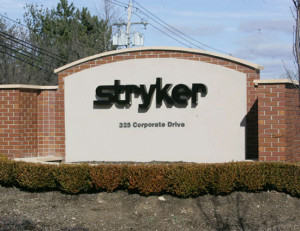Stryker Faces New Rejuvenate Hip Replacement Lawsuit
On September 28, 2015, a husband and wife filed a Stryker hip replacement lawsuit in U.S. District Court for the District of New Mexico alleging severe personal injuries suffered by the husband as a result of his experience with the defendant’s modular hip replacement. The plaintiffs, who are seeking damages in excess of $75,000, assert that Stryker committed multiple acts of negligence and misrepresentation in its design, manufacture and marketing of the products – which were allegedly known to cause severe problems in a number of hip replacement patients nationwide.
Accordingly, the plaintiffs are seeking compensation for not only the medical costs associated with a hip replacement repair and revision, but various non-economic damages as well – including a claim entered by the wife for mental anguish suffered in handling her spouse’s severe medical complications.
Details of allegations against Stryker
Stryker is in the business of designing and manufacturing various orthopedic products, including hip, knee and shoulder replacement devices. Of particular interest in this case is the Stryker Rejuvenate hip device, which has been targeted in a number of other lawsuits for allegedly causing patients severe pain and increased metallic levels in the bloodstream.
According to the plaintiff’s allegations, he received the Stryker hip implant in 2010 pursuant to a total hip replacement. Approximately two years later, Stryker published a “Field Safety Notice” drafted to inform physicians and surgeons as to the potential for increased presence of metal in the blood – specifically due to the debris created when the two-part ball-and-socket components created friction during normal use.
In June 2012, Stryker recalled the Rejuvenate and ABG II systems due to widespread reports of increased levels of chromium and cobalt levels in patients’ blood streams. Up until this point, the plaintiffs maintain that they were never told about either the Field Safety Notice or the recall of the Rejuvenate device, and the plaintiff continued to utilize the hip replacement system despite known dangers.
Finally, in January 2013, the defendant was warned about the potential side effects of the hip replacement device, and was counseled as to the increased risk of metallosis associated with the Rejuvenate product.
Causes of action
The plaintiffs begin their allegations by asserting that the Stryker hip replacement did not perform as it should – and was unfit for its particular purpose of helping patients regain mobility following total hip arthroplasty. To this end, the plaintiffs also allege that the Rejuvenate model is unreasonably dangerous and liability should attached based on a theory of strict products liability.
The plaintiffs are suing based on the following causes of action:
- Failure to properly design & test the Rejuvenate model
- Negligently analyzing clinical testing data
- Failing to conduct post-market research on the safety of the product
- Misrepresenting the product as safe
- Failure to provide adequate safety instructions
- Failure to adequately warn patients of potential problems with the product
- Continuing to market the product despite known potential problems
The plaintiffs continue by alleging negligent and fraudulent misrepresentation, as well as a claim for punitive damages stemming from Stryker’s alleged willful and reckless misconduct.
- Bloomberg.com, Stryker to pay more than $1 billion for recalled devices, http://www.bloomberg.com/news/articles/2014-11-03/stryker-to-pay-more-than-1-billion-for-recalled-devices
- FDA.gov, Safety recalls: Stryker Rejuvenate modular-neck stem, http://www.fda.gov/safety/recalls/ucm311043.htm



 Resources
Resources
 Resources
Resources
